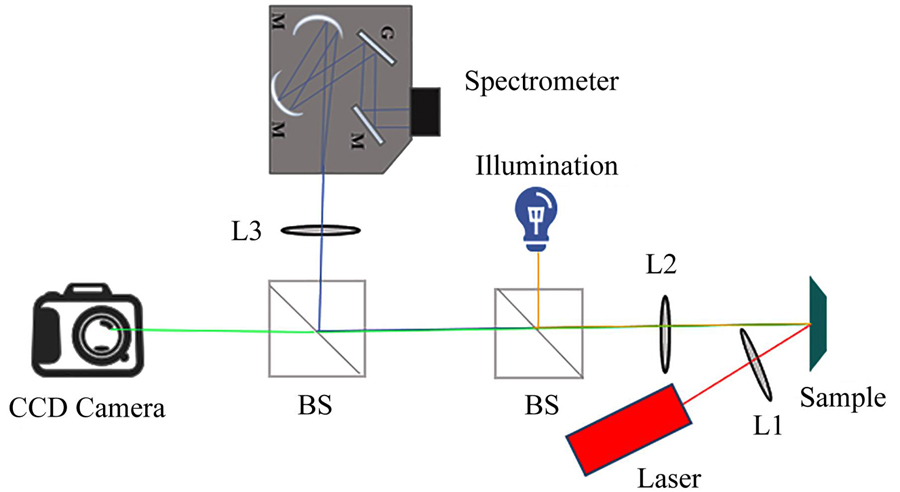Synchrotron radiation experimental methods have unique advantages in studying the structure and physical properties of materials, but it is a challenge for many experimental methods to achieve synchrotron radiation in situ high temperature conditions, especially above 2 000 K. Laser heating methods can achieve rapid, micro-region extreme high temperature conditions, and have become an important tool for the study of high temperature physical properties.
This study aims to develop a portable laser heating device for Shanghai Synchrotron Radiation Facility (SSRF) in situ experiments in the field of extreme high temperature research, such as high entropy alloys, turbine blades, aviation materials, etc.
A 100 W continuously tunable near-infrared fiber laser was used as the heating souce, the sample was heated up by laser through the focusing lens and generated thermal radiation. The radiation spectrum was collected through the spectral collection focusing lens and measured by spectrometers. The temperature gradient and temperature stability of the sample were fitted by the blackbody radiation method. Finally, the melting experiment of pure tungsten sheets in vacuum was conducted to verify its maximum heating temperature, and the temperature gradient and stability measurement of the device were calibrated with platinum samples.
We Experimental results show that melting point of about 3 695 K for tungsten sheets in vacuum is achieved using this device, and X-ray diffraction patterns of MoS2 and CTAB-MoS2 materials under 1 608 K in situ are obtained at the surface diffraction beamline station of SSRF.
The laser heating method developed expands the extreme experimental conditions in SSRF, and provides an important means to study high temperature physics for materials.




